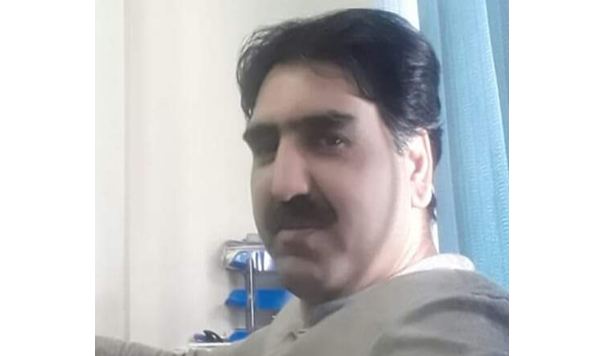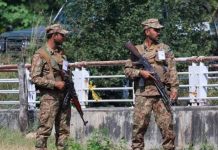Dr. Muhammad Shahid
Pakistan’s prevailing economic condition is not good. Every morning a new headline underscores growing economic concerns and the latest trend of major economic indicators is a source of great concern not only for policy makers but for the general public as well.
Pakistan’s economy is witnessing high inflationary and external sector pressures. Inflation has risen to a 48-year high and the consumer price index increased to 27.55 percent, highest since May 1975. The pressures on headline inflation during the period can be attributed to adjustments in prices of electricity and gas, a significant increase in non-perishable food prices, and exchange rate depreciation along with a rapid increase in global fuel and food prices.
The current coalition government scrapped costly fuel subsidies to tame the surging fiscal deficit and revive the stalled International Monetary Fund loan programme. Therefore, fuel prices skyrocketed sinceMay 2022. Prices turned sharply higher in the second half of 2022 with supply chain snags, devastating flood in the country and other multiple forces at work. Adding fuel to the fire, the war in Ukraine has lifted food prices to an entirely new level.
Inflation is running above projections and has far exceeded expectations which altered the economic mood. State Bank of Pakistan promptly responded to the alarming rise in inflation. The aggressive response of SBP to contain inflation is hurting the economy because consumers and businesses sentiments are at record lows. Although, the interest rate hikes of the SBP has not matched the pace of inflation. SBP has been asked to undertake unprecedented responsibilities and it raised the policy rate to 17 percent to anchor inflation.
The overreliance on SBP & its monetary policy to achieve low and stable inflation is bound to disappoint us. The rampant inflation also checked growth in income of the people, rising so fast that it has diminished the purchasing power of people’s take-home pay and could potentially reset the path of our national economy for the years to come.
Inflation is on the rise and shows few or no signs of abatement. The considerable depreciation of our currency against the dollar is also contributing to higher inflation. SBP response of raising policy rates more assertively to slow demand is on the horizon and is killing our growth. Accordingly, many economists, analysts and other institutions are lowering their growth projections. Pakistan projected GDP growth of 5 percent at the time of presenting annual budget which is now revised downward to 1 percent. IMF expects one percent GDP growth for Pakistan’s economy during the current fiscal year.
Other economic indicators are also on the downward trend. The large-scale manufacturing sector witnessed a contraction of 3.7 percent during the first half of the current fiscal year against the growth of 7.7 percent during the same period last year. LSM declined by 3.5 percent on a year on year basis in December 2022. Adverse shocks owing to the global recessionary trend, fiscal consolidation and the synchronized global monetary tightening, restriction on imports, problem with issuing LCs, high inflationary pressures and significant depreciation badly damaged the business environment and manufacturing sectors.
Some improvement has been made on the fiscal front. The aggregate revenues grew by 18.8 percent to reach Rs 4,699 billion during the first half of FY2023, against Rs 3,956 billion in the same period of last year. The surge in revenue collection is supported by 26.4 percent increase in the non-tax collection. Tax collection showed improvement and have posted a growth of 17 percent during the first half of current fiscal year.
However, total expenditures grew by 19.8 percent to Rs.6,382 billion during the first half of the current fiscal year. Current expenditures surged by 30 percent to Rs.6,061 billion during the first six months of FY23. The efforts to ensure fiscal sustainability are threatened by a sharp rise in mark-up payments which grew by 77 percent and surge in federal and provincial PSDP which grew by 4.5 percent during the first half of current fiscal year.
External sector showed some positive signs in response to policy decisions and substantial improvement in trade balance is observed. The current account posted a deficit of 3.8 billion dollars during the first seven months of the FY23 as against a deficit of 11.6 billion dollars during the same period last year. Exports declined by 7.4 percent during the first seven months of the current fiscal year and recorded at 16.4 billion dollars. On the other hand, imports declined by 20.9 percent during Jul-Jan FY2023 and reached 33.4 billion dollars. Therefore, trade deficit reached to 17 billion dollars as against of 24.6 billion dollars during the same period last year.
Pakistan has experienced macroeconomic instability since the early seventies. Private investment has been discouraged due to the persistent macroeconomic uncertainty. There is a significant decline in foreign direct investment in the country and it reduced by 44.2 percent during the first seven months of the current fiscal year. Foreign direct investment declined to 683.5 million dollars during the first seven months of the FY23 compare to 1224.7 million dollars during the same period last year. Furthermore, IMF had projected 11 billion dollars external financing gap for the current fiscal year.Government should accord high priority to foreign direct investment because it is crucial to boost industrial production and other economic activities in the country.
Working out how to respond to the current economic crisis is not easy and the path ahead is complicated requires deep understanding of the intricate issues. A range of issues from the slowing productivity, energy crisis, negative supply shocks, the return of inflation, new monetary era, rising geopolitical assertion and allocation of competing resources are factors making our economic woes worse. The return of stability require investment in energy, especially renewable and alternate energy projects, painful monetary stabilization, fiscal consolidation, and the privatization of state-owned enterprises. In addition, we need strong political will to introduce and implement genuine economic reforms in the country. Any delay in the economic stabilization program will add to the existing cost further.
The author has a PhD Degree in Economics from PIDE and has 17 years’ experience as a journalist in economic reporting. He also teaches Public Policy, Governance, Poverty andDevelopment, Gender and Political Economy.












